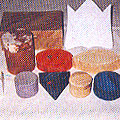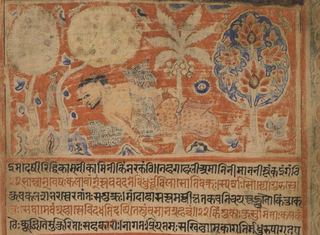Before the introduction of paper, the leaves and bark of trees, the palm and plantain, especially the bhojpatr and talpatr were used. Cloth treated specially for use for manuscript, metal, leather including vellum, and parchment were also in use. Once introduced into this country, the craft of paper making flourished and demands for the country’s handmade paper and handmade paper items have grown.
Today a wide variety of materials are used to make paper: these include cotton rags, jute and hemp waste, old gunny bags and fishnets. Indigenous regenerating plants like flax, daphne, sun-hemp, sisal, water hyacinth, old paper, bamboo and bagasse are also popular. In each centre the material varies according to what grows in its surrounding environment or is easily and inexpensively available locally. Constant experimentation with new material is also adding to the list of already existing raw material. Recycling of old paper is another important source in the production of paper by hand.
The technique of production today remains essentially the same as it was in the past. It has however been shortened and made less arduous by the introduction of some machines. The process of pulping is now carried out by electrically operated beaters rather than pounding by hand and the smoothening or ‘calendering’ of the paper is done by special hand operated machines. But the actual formation of the sheet is still entirely a handmade art. The drying paper, hung on clotheslines, adds a festive appearance to all production centres.
The conversion of paper into products holds vast potential as items like gift boxes, visiting cards, toys, flower vases, flowers, greeting cards, writing pads, photo albums, ornament boxes, visiting cards, bags, pen holders and wrapping papers are being exported in large quantities. Locally, the paper is used to print wedding cards, view cards and invitation letters. New designs and varieties of paper are being experimented with constantly.
The production of hand paper has, besides its inherent creative and aesthetic side, a strong economic and environment friendly basis. With the use of waste material, a low energy requirement, non-polluting technical process and no chemical additives it remains the product of choice.
Gallery
YOUR VIEWS
PRACTITIONERS: INDIA
Access 70,000+ practitioners in 2500+ crafts across India.
BIBLIOGRAPHY
10,000+ listings on arts, crafts, design, heritage, culture etc.
GLOSSARY
Rich and often unfamiliar vocabulary of crafts and textiles.
SHOP at India InCH
Needs to be written.






